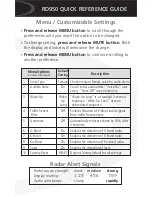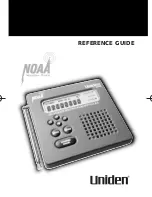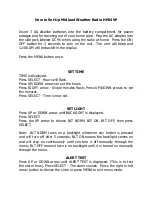
3.1.5.1
Preempting Group Calls
NOTICE:
Your radio can only support either the D-PTT Tone feature or D-PTT Preempt Group
Call feature at a time.
Procedure:
1
Your radio receives a Group Call.
2
Press the PTT button twice on the radio or the Remote Control Unit (RCU).
Call preempt is triggered.
3.1.6
Dynamic Group Number Assignment (DGNA)
DGNA allows the network operator to dynamically manage talkgroups on your radio over the air
interface. Using DGNA, the network operator can:
• Add talkgroups.
• Attach or select newly added talkgroups.
• Delete talkgroups.
• Modify parameters of existing talkgroups.
All the above operations are performed by transmitting data to your radio.
3.1.6.1
DGNA Reception
When a DGNA message is received, your radio plays a tone and displays a message
Talkgroup
list updated
. If enabled by your service provider, your radio displays all added and deleted
talkgroup list.
When your service provider deletes (de-assigns) the currently selected talkgroup, depending on the
settings, your radio can perform one of the following actions:
• Enter the “No Group” state – your radio does not attach to any talkgroup automatically.
• Attach to the last selected TMO talkgroup. If the last selected TMO talkgroup is not available (it was
deleted), your radio enters the “No Group” state.
• Attach to a default talkgroup configured by your service provider. If the default talkgroup is not
available (it was deleted), your radio enters the “No Group” state.
At each talkgroup change, an appropriate notification is shown on the display.
If the DGNA message is received to delete all talkgroups, your radio displays
All Talkgroups
Deleted
. To exit the DGNA display, you can use the
Back
Soft key or the
End
key.
3.1.6.2
DGNA Auto Select Group
If the DGNA Auto Select is configured, whenever your radio receives a DGNA, it switches to the added
talkgroup.
68015000797-EH
Chapter 3: Modes
44
















































